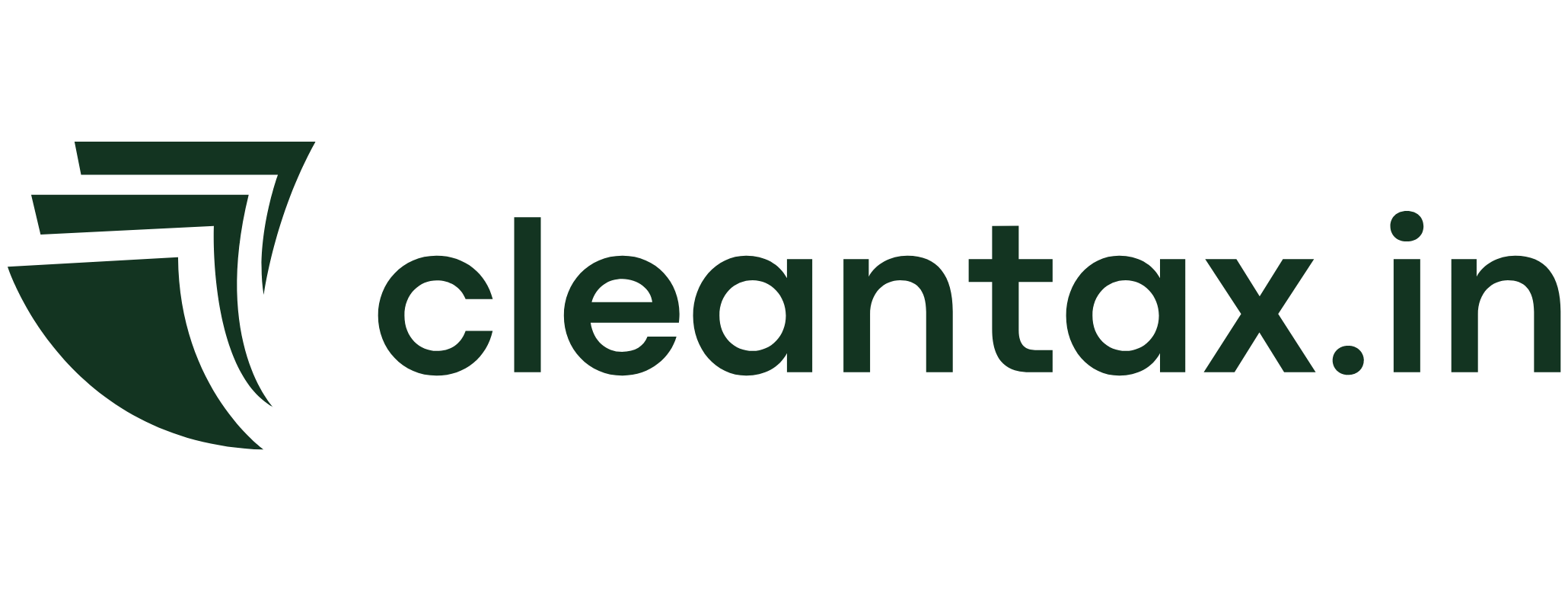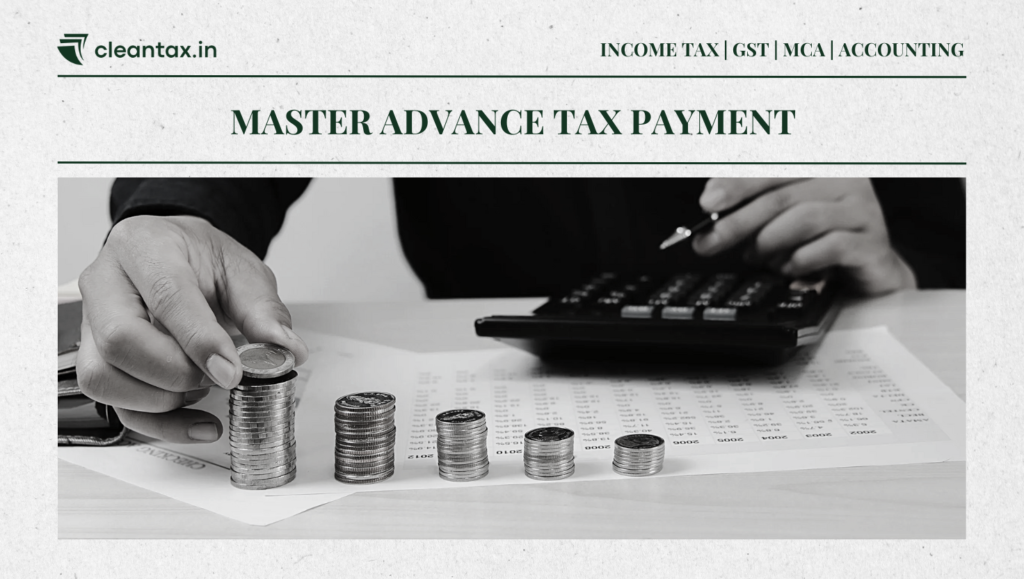Advance tax payment is a critical concept in the Indian taxation system, designed to ensure that taxpayers contribute their tax dues throughout the financial year instead of making a lump sum payment at the year’s end.
The key idea behind this tax is that individuals and businesses pay tax on income as they earn it. This allows the government to collect taxes progressively, ensuring a steady flow of revenue. In this article, we’ll cover everything you need to know about advance tax, including due dates, the tax calculator, applicability, procedure, and how to pay it online.
What is Advance Tax?
It refers to the income tax that individuals or businesses are required to pay during the financial year in multiple installments. This is instead of paying the entire tax amount at the end of the financial year. This system ensures that taxpayers pay their taxes as they earn, which helps reduce the burden at the time of filing the tax return.
The tax is calculated based on the estimated income for the financial year. For this tax payments are made according to specific due dates set by the Income Tax Department, and failure to make these payments on time may result in penalties or interest charges.
Why is Advance Tax Important?
Advance tax is not just a mechanism for the government to receive payments throughout the year; it also helps taxpayers spread out their tax burden, making it more manageable. Moreover, paying advance tax on time helps avoid interest penalties under Section 234B and 234C of the Income Tax Act.
Who Should Pay Advance Tax?
Salaried Individuals, Freelancers, and Businesses
Advance tax is applicable to all taxpayers, including salaried individuals, freelancers, and businesses, whose total tax liability exceeds ₹10,000 in a financial year. If your income is subject to tax deductions at source (TDS), and the tax payable after considering TDS exceeds ₹10,000, you must pay advance tax.
Senior Citizens
Senior citizens (individuals aged 60 years or older) who do not run a business are exempt from paying advance tax. However, those who have business income are still required to pay advance tax, just like other taxpayers.
Presumptive Taxation Scheme for Businesses and Professionals
If you are a taxpayer opting for the presumptive taxation scheme under Section 44AD (for businesses) or Section 44ADA (for professionals), the advance tax payment schedule is different. Under these schemes, businesses and professionals are required to pay the entire advance tax liability in one installment on or before 15th March.
Advance Tax Due Dates for FY 2024-25
Advance tax payments are made in four installments during the financial year. The due dates for FY 2024-25 are as follows:
| Due Date | Advance Tax Payment Percentage |
| 15th June | 15% of total advance tax liability |
| 15th September | 45% of total advance tax liability (less amount already paid) |
| 15th December | 75% of total advance tax liability (less amount already paid) |
| 15th March | 100% of total advance tax liability (less amount already paid) |
Presumptive Taxation Scheme Due Date
For taxpayers who opt for the presumptive taxation scheme (under Sections 44AD and 44ADA):
| Due Date | Advance Tax Payment Percentage |
| 15th March | 100% of total advance tax liability |
By following these due dates, you ensure that you stay compliant and avoid penalties.
Advance Tax Payment Process
How to Pay Advance Tax Online?
Paying your advance tax online is a simple and convenient process. The Income Tax Department provides an e-filing portal where taxpayers can make their advance tax payments. Follow these steps to pay your advance tax online:
- Visit the Income Tax Department’s e-Filing Portal: Go to the official e-filing website of the Income Tax Department.
- Click on ‘e-Pay Tax’: On the homepage, look for the 'Quick Links' section and click on the 'e-Pay Tax' option.
- Enter Your PAN Details: You will be prompted to enter your PAN number. After entering it, confirm your details.
- Enter the OTP: A one-time password (OTP) will be sent to your registered mobile number. Enter this OTP to proceed.
- Select Payment Type: Choose 'Income Tax' and select the 'Advance Tax (100)' option.
- Select the Assessment Year: Choose the assessment year for which you are making the advance tax payment (for FY 2024-25, the assessment year is 2025-26).
- Enter Payment Details: Fill in the relevant payment details, such as the amount of advance tax you are paying.
- Choose Payment Method: Select your preferred payment method (credit card, debit card, net banking, etc.).
- Review and Make Payment: Double-check all details before proceeding to make the payment.
- Download Payment Receipt: After completing the payment, download the receipt for your records. You will need this when filing your tax return.
This simple process allows you to pay your taxes at your convenience, ensuring you don’t miss any deadlines.
Advance Tax Calculator – Calculate Your Liability
To estimate your advance tax liability, you can use tools like ClearTax's Advance Tax Calculator. The calculator will ask you to input details such as income from different sources, eligible deductions under Section 80C and other sections, and any TDS that has already been deducted. Based on these inputs, the calculator will provide you with an estimated advance tax liability and help you plan your payments accordingly.
Advance Tax Late Payment Interest
It’s crucial to adhere to the due dates for advance tax payments. If you miss a payment or fail to pay the required amount on time, interest will be charged under Sections 234B and 234C.
Section 234B: Interest for Non-Payment of Advance Tax
Under Section 234B, if you do not pay at least 90% of your total tax liability through advance tax or TDS/TCS by 31st March, you will be liable to pay interest at the rate of 1% per month on the outstanding amount.
Section 234C: Interest for Delayed Payments
Section 234C imposes interest if the advance tax payments made before each due date are less than the required percentages. The interest rate is 1% per month, and the following are the conditions under which it applies:
| Installment Due Date | Percentage of Total Advance Tax | Interest Applied |
| 15th June | Less than 15% | 1% per month for 3 months |
| 15th September | Less than 45% | 1% per month for 3 months |
| 15th December | Less than 75% | 1% per month for 3 months |
| 15th March | Less than 100% | 1% per month for 1 month |
By ensuring timely payments, you can avoid these interest charges.
How is Advance Tax Calculated?
To calculate your advance tax liability, follow these steps:
- Estimate Your Total Income: Add up all your income from various sources, including salary, capital gains, rental income, and interest on deposits.
- Subtract Eligible Deductions: Deduct allowable expenses under Sections 80C, 80D, and others. These deductions reduce your taxable income.
- Calculate the Tax Payable: Apply the relevant tax rates to your taxable income to calculate the total tax liability.
- Consider TDS: Subtract any tax that has already been deducted or collected at source (TDS/TCS).
- Determine Advance Tax Liability: If your total tax liability exceeds ₹10,000 after considering TDS, you need to pay advance tax in installments.
Example for Advance Tax Calculation
Let’s assume that Ajay is a freelancer earning income from interior decoration. He estimates his total income for FY 2024-25 as follows:
- Gross Receipts: ₹20,00,000
- Expenses: ₹12,00,000
- Net Income: ₹8,00,000
- Other Income: ₹10,000 (interest from FD)
After deductions under Section 80C and 80D (PPF contribution, LIC premiums, etc.), his total income for tax purposes is ₹7,33,000. The tax payable is ₹61,464, and after considering TDS of ₹30,000, Ajay’s advance tax liability is ₹31,464, which he must pay in installments.
For More Information Please Refer:
- How to Calculate Tax Liability for FY 2024-25 (ClearTax)
- Avoiding Common Mistakes When Filing Income Tax Returns (Home Credit)
- Understanding the Benefits of Section 80C Deductions (Bajaj Finserve)
- Top Tools to Simplify Tax Calculations for Individuals (ClearTax)
Conclusion
Advance tax is an essential aspect of tax planning in India. By ensuring timely payments and understanding advance tax calculation process, taxpayers can manage their tax obligations efficiently and avoid penalties. Using online portals and tools like the ClearTax Advance Tax Calculator makes the process even easier and more transparent.
Stay ahead of the game, calculate your advance tax early, and pay on time to avoid any unwanted stress or penalties at the end of the financial year.
FAQs about Advance Tax
1. When should I pay advance tax?
Advance tax is paid in four installments, with the first installment due by 15th June. If your tax liability exceeds ₹10,000 in a financial year, you need to pay advance tax.
2. What happens if I miss the deadline for advance tax payments?
If you miss the due date for advance tax, you may be charged interest under Sections 234B and 234C for late payments.
3. Can senior citizens skip advance tax payments?
Yes, senior citizens (60 years and older) are exempt from paying advance tax, provided they do not have business income.
4. Can I pay advance tax after the due date?
You can still pay advance tax after the due date, but you will be liable to pay interest under Sections 234B and 234C.
5. How can I check my advance tax payment status?
You can check your advance tax payment status through the Income Tax Department’s e-filing portal by logging into your account.
6. What is the minimum tax amount required for advance tax payment?
You need to pay advance tax if your total tax liability exceeds ₹10,000.
7. Can I claim deductions under Section 80C when estimating income for advance tax?
Yes, you can claim deductions under Section 80C and other sections while calculating your income for advance tax.


